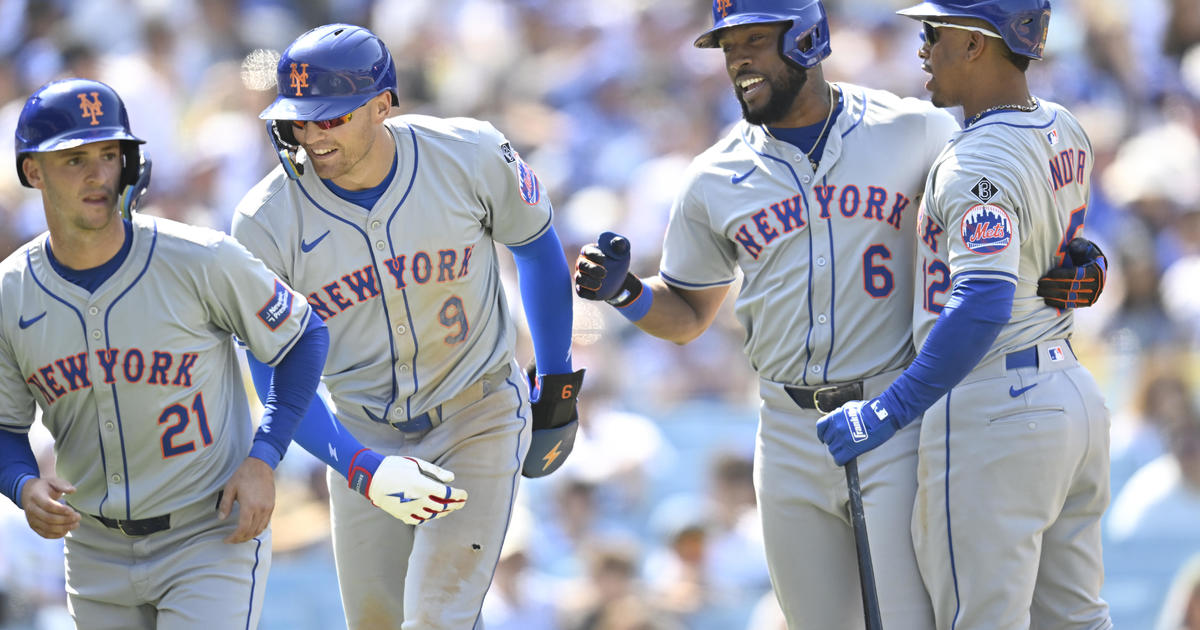Lichtenstein: Jets' Quantity-Over-Quality Draft Strategy A Big Risk
By Steve Lichtenstein
» More Columns
How was your weekend?
Mike Maccagnan spent his at the equivalent of a swap meet. The Jets' general manager was on the phone nonstop, trying to trade one quarter after another for two dimes in the hope that one of the dimes was secretly laden with gold.
Maccagnan made a franchise-record five trades after Round 2 concluded Friday night. Four were to move back in the draft, and in the other, he dealt a sixth-rounder to Dallas for its 2018 fifth-round pick. By midday Saturday, I was thinking that Maccagnan wouldn't be satisfied until he possessed the last five selections in the seventh round.
The Jets have been getting decent preliminary grades for their overall performance at the draft, and I suspect a lot of it has to do with beastly LSU safety Jamal Adams falling to them in the sixth spot in the first round. Gang Green went into the draft with seven picks and came out with nine players. As with any draft, we can't fairly judge this group for several years.
At this point, though, it's important to note that quantity never beats quality when the scoreboard for this draft is finalized. Brian Costello of the New York Post tweeted that the 49ers had a league-high 51 picks in the previous five years, and only one has made a Pro Bowl. They're also a mess.
Remember the Idzik-12? Only four from Maccagnan's predecessor John Idzik's extra-large 2014 draft class made it through to the end of last season. In addition, safety Calvin Pryor, the first-round choice, might not be long for the job considering both Adams and Marcus Maye, the Jets' first two choices in this draft, play his position.
MORE: Palladino: Drafting Value Over Need Could Backfire On Jets, Giants
Now, moving down in drafts is a common occurrence. Maccagnan explained that "you roll the dice a little bit when you move back, but there were situations where we felt there would still be some players that we potentially could get (while trading down). In a lot of cases, you'll be sitting at a spot, and you'll have some players that you like coming to you -- and you'll have them prioritized. In terms of the trade-back opportunities, either we felt there were a number of players on our board that, if we went back and got multiple picks, maybe the sum of the two picks we got was greater than the one player we would have taken,"
Some of that makes sense. Many GMs take risks and pray that the players they really wanted are still on the board at their new slots. If you can get another asset for moving back and feel comfortable you'll still get your preferred choice, sure, you make the move.
But four times? Are all 31 other scouting departments not seeing the same things you've seen in each of these players?
MORE: Keidel: 2017 NFL Draft First-Round Winners And Losers
As for his probability analysis at the end, I mean, I know Maccagnan doesn't think you can stack one player on top of another to form one superior being. What it sounds like is that he would rather have two, um, lower-rated players over one average player.
Let's examine how this theory worked over the weekend: Maccagnan's first deal was to move back in the third round from 70 to 79. In return, he added a mid-fifth-round pick. The Vikings used the Jets' slot to select Ohio State center Pat Elfein, the top-ranked interior lineman by ProFootballFocus.com and someone who could have been helpful to the Jets at a position in need of fortification.
The Jets then used the Vikings' slot to take Alabama's ArDarius Stewart, the first of two not-too-tall and not-too-fast wide receivers (Chad Hansen from Cal was the other) the Jets would acquire in succession.
Maccagnan then packaged that extra fifth-round pick with the Jets' seventh-rounder to move down 21 slots and get an extra sixth-round pick from the Browns. While Cleveland selected a potential starting tackle (again, a need position for the Jets) in Florida State's Roderick Johnson with New York's pick, Maccagnan eventually took Dylan Donahue, a 25-year-old Division II tweener for the defensive front seven, and Elijah McGuire, a small-school situational running back.
I won't get into the secret "chart" that GMs supposedly use to value draft-day trades, even though Rich Cimini of ESPN.com reported that Maccagnan came out on the losing end when the dust settled and all the "points" were tabulated. The focus instead should be on whether this plan of going for so many lower-round question marks in lieu of better options in the original slots was well thought out.
Yes, gems are found late in drafts. Everyone knows Tom Brady waited until the sixth round before he got the call back in 2000. Want to know how many career starts and Pro Bowls the Patriots got out of their 25 subsequent sixth-round selections? That would be eight and zero.
And that's under the Bill Belichick regime, where the five-time Super Bowl champions have made it their business to scout and then develop under-the-radar athletes who then perform at high levels.
If you've been a Jets fan as long as I have, you know this organization hasn't seen that happen since maybe Wayne Chrebet, and he was undrafted.
The point is that those rags-to-riches developments make for great stories, but they don't occur as often as many people think. With some limited positional exceptions, higher-round draft picks are statistically more likely to have greater NFL success than players chosen in later rounds.
None of this will matter if the Jets find a good number of starters among this group. If they don't, though, it will go down as another wasted opportunity.
For a FAN's perspective of the Nets, Jets and the NHL, follow Steve on Twitter @SteveLichtenst1



